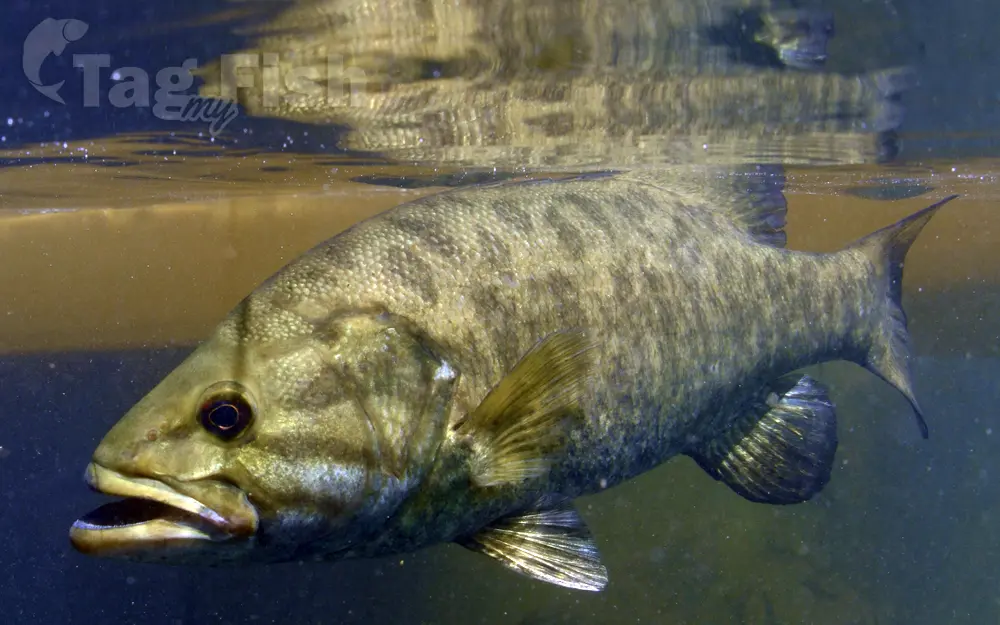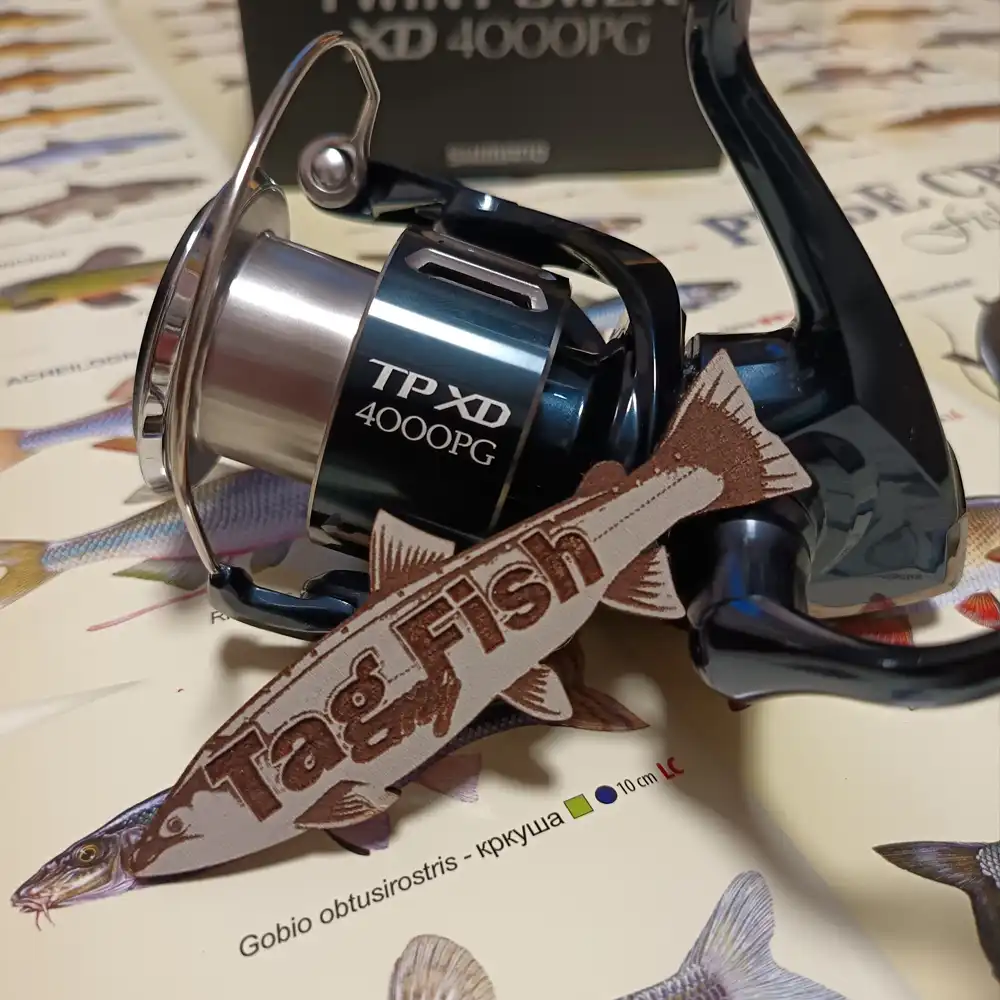Smallmouth bass (Micropterus dolomieu)

General data
- Main name: Smallmouth bass
- Climates: Subtropical, Temperate, Continental
- Habitat: Freshwater
- Native: North America
- Introduced: Africa, Europe
- Distribution: Missouri River, Rio Grande, Hudson River, Susquehanna River, Klamath River, Sacramento River, View all... San Joaquin River, Delaware River, Savannah river, Pee Dee river, Limpopo, Santee River, Nueces River, Lake Washington, Brazos River, Sevier River, Rappahannock River, Caloosahatchee River, Apalachicola River, James river (Virginia), Colorado River (Texas), St. Lawrence River, Columbia River, Mobile River, Chesapeake Bay, Potomac River, Mississippi River
Classification
- Genus: Micropterus - Black basses
- Family: Centrarchidae - Sunfishes
- Order: Centrarchiformes - Basses and sunfishes
- Class: Teleostei - Ray-finned fishes
- Superclass: Osteichthyes - Bony fishes
Description
The smallmouth bass (Micropterus dolomieu) is a species of freshwater fish in the sunfish family (Centrarchidae) of the order Perciformes. It is the type species of its genus. One of the black basses, it is a popular game fish sought by anglers throughout the temperate zones of North America, and has been spread by stocking - as well as illegal introductions - to many cool-water tributaries and lakes in Canada and more so introduced in the United States. The maximum recorded size is approximately 27 inches and 12 pounds. The smallmouth bass is native to the upper and middle Mississippi River basin, the Saint Lawrence River–Great Lakes system, and up into the Hudson Bay basin. The world record size was 11 lbs and 15 ounces caught in the reservoir Dale Hollow, on the Kentucky—Tennessee border. Its common names include smallmouth, bronzeback, brown bass, brownie, smallie, bronze bass, and bareback bass. Smallmouth have a slender but muscular fusiform body shape making them very powerful swimmers. The coloration of the smallmouth bass ctenoid scales range from golden-olive to dark brown dorsally which fades to a yellowish-white ventrally with dark brown vertical bars or blotches along the body and dark brown horizontal bars on the head. The combination of the muscular fusiform body shape and camouflage-like coloring make these fish highly effective ambush predators. The coloration can vary greatly depending on the fishes age, habitat, water quality, diet, and spawning cycle. Generally, the protruding jaw of the smallmouth does not extend past the eyes which are red or brown. They have two dorsal fins which are separated by a shallow interdorsal notch. The front dorsal has 9-11 spiny rays and the back dorsal has 13–15 soft rays. Males are generally smaller than females. The males tend to range around two pounds, while females can range from three to six pounds. Their average sizes and coloration can differ, depending on if they are found in lacustrine or riverine habitats. Smallmouth found in riverine habitats are generally long and slender which allows greater agility in moving water, while those found in lacustrine habitats and shorter and deeper bodied. Riverine smallmouth that live in dark water tends to be rather torpedo-shaped and very dark brown to be more efficient for feeding. Lacustrine smallmouth bass, however, that live in sandy areas, tend to be a light yellow-brown and are more oval-shaped. There are two recognized subspecies, the Northern smallmouth bass (M. dolomieui dolomieui) and the Neosho smallmouth bass (M. dolomieui velox). The Northern smallmouth bass is much more widespread than the much smaller subgroup called the Neosho smallmouth bass. The Neosho are native to an ecologically isolated region of the lower Midwest known as the Central Interior Highlands, which weave through southwestern Missouri, northern Arkansas and northeastern Oklahoma. They have been seen eating tadpoles, fish, aquatic insects, and crayfish. The smallmouth bass is found in clearer water than the largemouth, especially streams, rivers, and the rocky areas and stumps and also sandy bottoms of lakes and reservoirs. It can also survive in a stronger current than other black bass. The smallmouth prefers cooler water temperatures than its cousin the largemouth bass, and may be found in both still and running water. Because it is intolerant of pollution, the smallmouth bass is a good natural indicator of a healthy environment, though it can better adjust to changes in water condition than most trout species. Carnivorous, its diet comprises crayfish, amphibians, insects, and smaller fish, while the larvae feed on various zooplankton and insect larvae. Adults also cannibalize young of other parents. The female can lay up to 21,100 eggs, which are guarded by the male in his nest. Migration When the weather gets colder, and the water temperature drops below 15 C (60 F), smallmouth will often migrate in search of deeper pools in which they enter a semi-hibernation state, moving sluggishly and feeding very little until the warm season returns. The migration patterns of smallmouth have been tracked and it is not unusual for a smallmouth to travel 12 miles in a single day in a stream, creek or river. The overall migration can exceed 60 miles. Smallmouth generally begin spawning patterns in spring or early summer when water temperatures are between 15-18 degrees Celsius(59-64.4 F) which is heavily dependent on latitudinal location. Smallmouth require clean stone, rock, or gravel substrate for a successful spawn.


